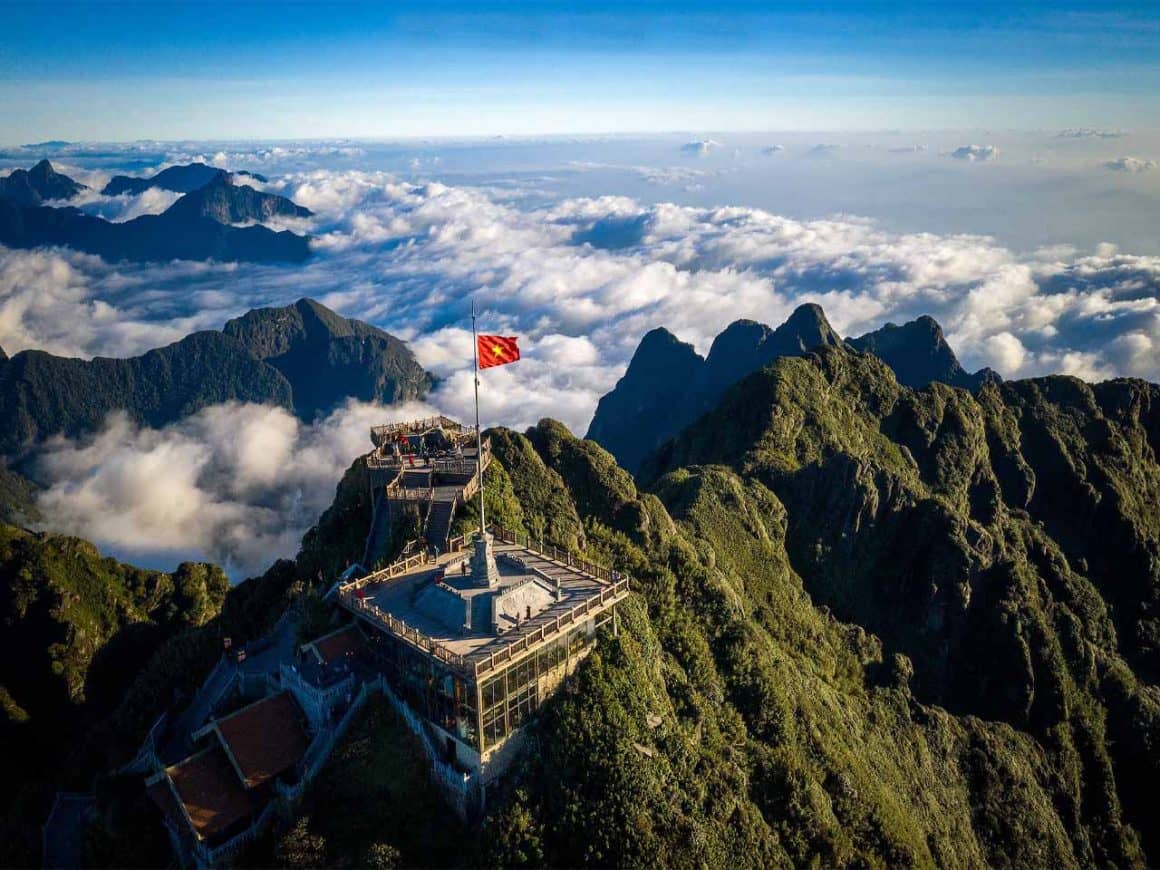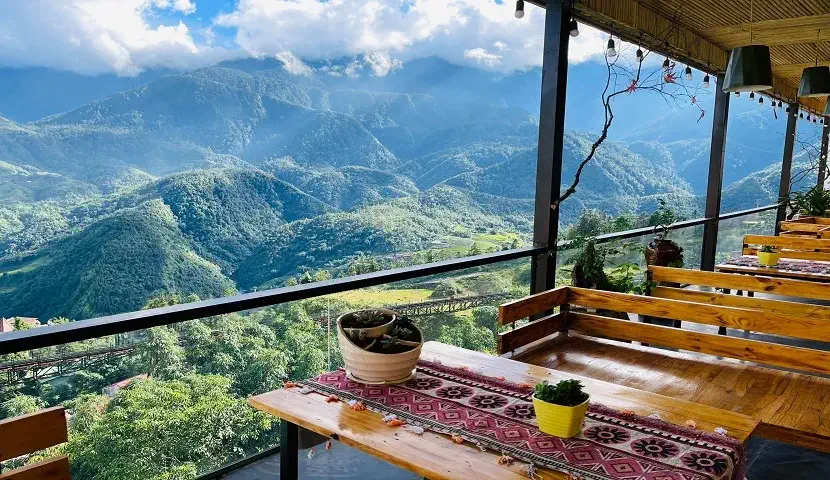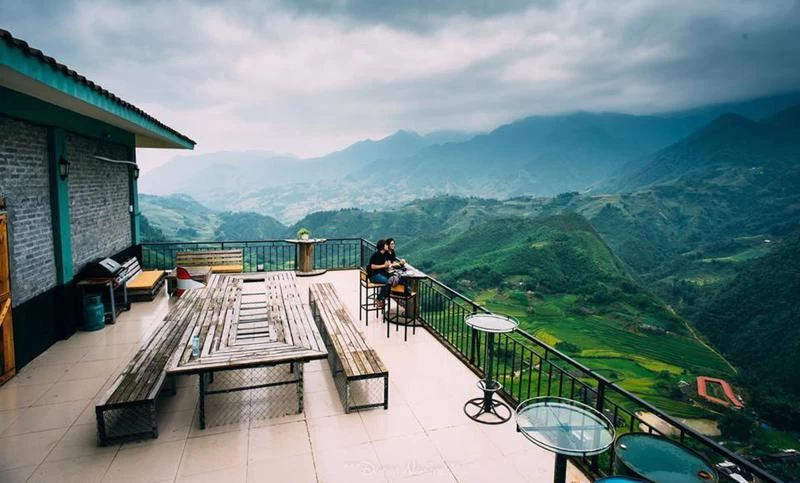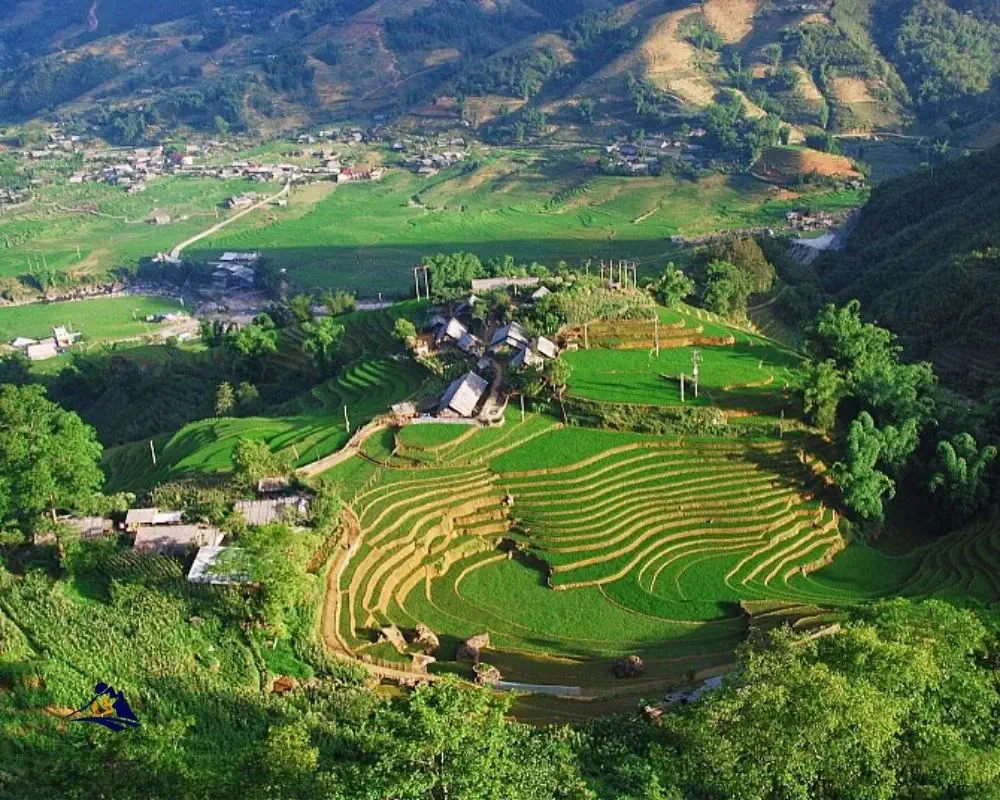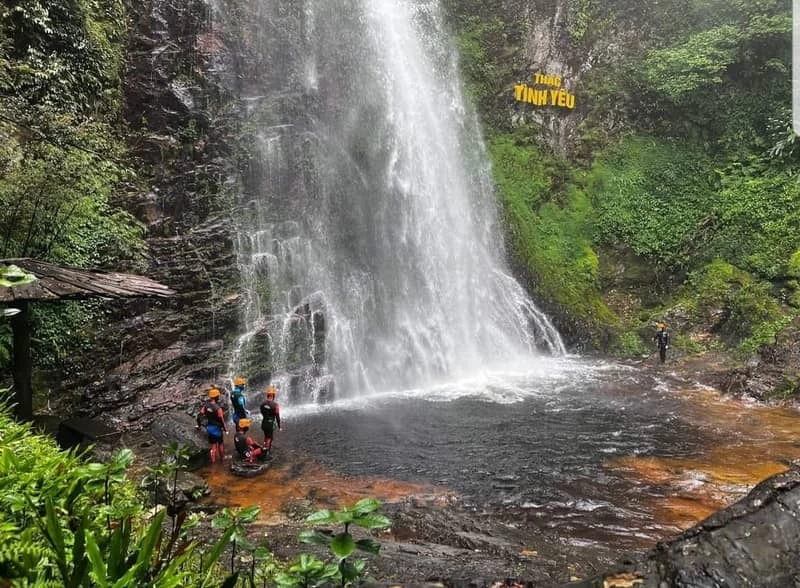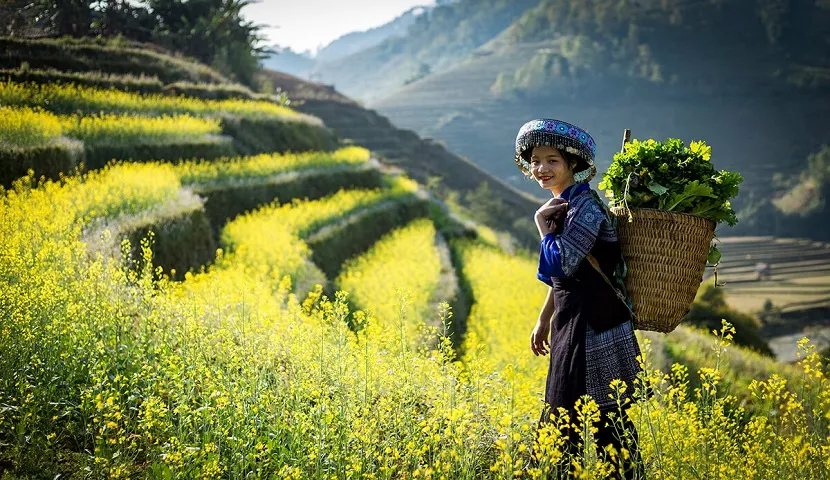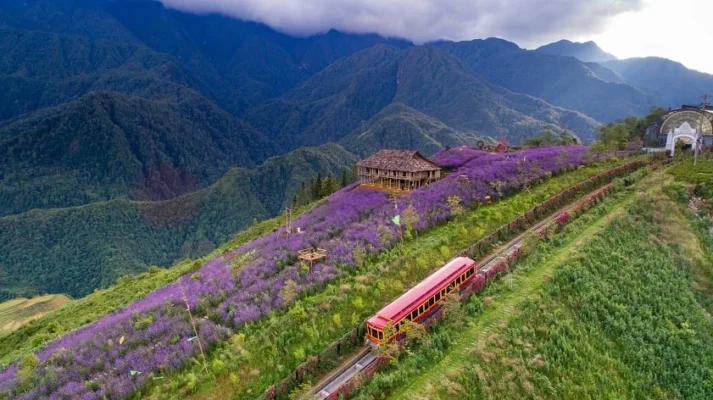
Welcome to the most beautiful valley in Sapa.
Discover Muong Hoa Valley, a breathtaking destination in Sapa, Vietnam, renowned for its stunning terraced rice fields, vibrant local culture, and ancient rock carvings. Explore picturesque landscapes, immerse yourself in the traditions of ethnic minority groups, and experience unforgettable trekking adventures. Ideal for travelers seeking a serene escape and authentic cultural experiences. Plan your visit with Ula Travel to Muong Hoa Valley today and witness the natural beauty and rich heritage of this hidden gem.
I. Introduction to Muong Hoa Valley
1. Overview of Muong Hoa Valley
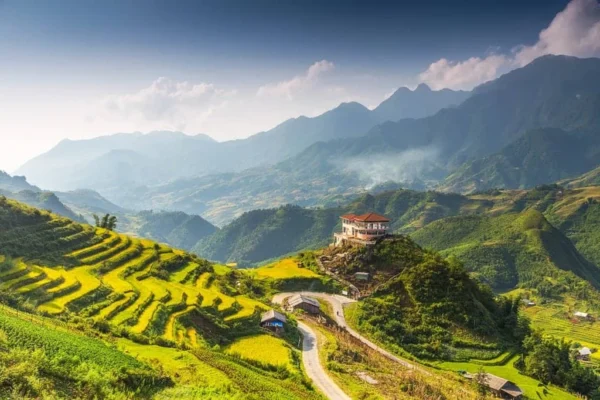
The beauty of Muong Hoa Valley
Muong Hoa Valley is located just 8 kilometers southeast of Sapa town, making it an accessible and must-see destination for anyone visiting the region. The valley stretches across a vast area, offering visitors breathtaking views of terraced rice fields, majestic mountains, and peaceful rivers.
The valley is known for its stunning natural beauty, with verdant landscapes that change color throughout the year, depending on the season. Its proximity to Sapa allows for easy day trips or extended stays for those looking to explore the rural charm of this iconic valley.
2. Highlights of Muong Hoa Valley
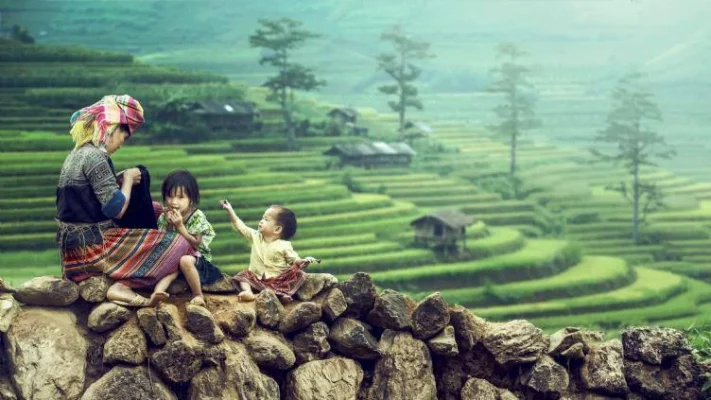
Muong Hoa Valley is home to many different ethnic minorities.
Muong Hoa Valley is not only famous for its scenic landscapes but also for its rich cultural heritage. The valley is home to several ethnic minority groups, including the Hmong, Dao, and Tay people, who have inhabited the area for generations. Their traditional way of life, reflected in their clothing, customs, and farming techniques, adds a distinct cultural layer to the valley’s beauty.
Muong Hoa’s terraced rice fields, cleverly carved into the mountain slopes, create a visually stunning patchwork of greenery and gold, particularly during the harvest season. These terraces, along with the presence of ancient rock carvings scattered throughout the valley, give Muong Hoa a mystical, timeless appeal that draws both nature lovers and cultural enthusiasts.
II. How to Get to Muong Hoa Valley
1. Traveling from Sapa
Muong Hoa Valley is conveniently located about 8 kilometers southeast of Sapa town, making it easily accessible by several means of transportation.
- Motorbike: One of the most popular ways to reach the valley is by renting a motorbike. The scenic road takes you through winding mountain passes and offers breathtaking views of terraced rice fields and distant peaks. The ride from Sapa to Muong Hoa Valley takes around 20 to 30 minutes, depending on road conditions and traffic. Be prepared for some sharp turns and steep descents, but the stunning landscape makes it worthwhile.
- Electric Shuttle: For those who prefer a more relaxed journey, Sapa offers electric shuttles, which are an eco-friendly and comfortable option. These shuttles typically run between central Sapa and various stops in Muong Hoa Valley. This option is ideal for travelers who want to sit back and enjoy the views without worrying about navigating the mountainous roads.
- Walking/Trekking: If you’re up for a bit of adventure, trekking from Sapa to Muong Hoa Valley is a fantastic way to immerse yourself in the natural beauty and rural life of the region. The trek takes around 2-3 hours, depending on your pace and the route you take. Along the way, you’ll pass through villages inhabited by the Hmong, Dao, and other ethnic groups, offering an up-close look at their daily lives. Trekking is an excellent option for those who love nature and want to explore the valley’s beauty on foot.
2. The Famous Muong Hoa Mountain Train
One of the most unique ways to travel to Muong Hoa Valley is by the Muong Hoa Mountain Train, a funicular railway that takes visitors from Sapa town to the valley. This train is part of the Sun World Fansipan Legend complex, making it a memorable experience for travelers. The ride is only 6 minutes long, but it offers spectacular panoramic views of the valley’s terraced fields, lush greenery, and towering mountains.
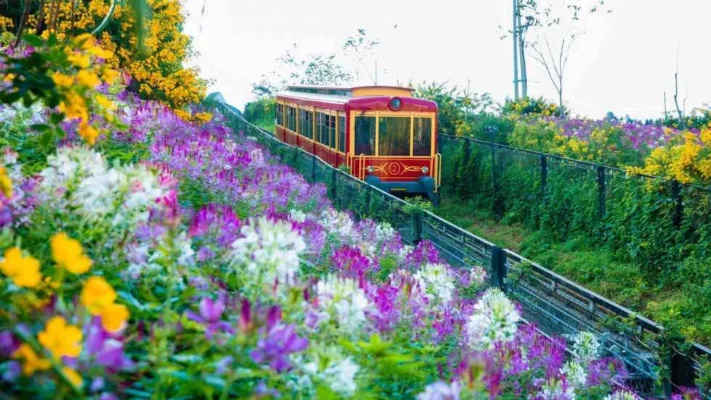
Muong Hoa Mountain Train
The train departs from the MGallery Hotel in Sapa and takes you to the Muong Hoa Valley station. Its large windows and slow pace make it perfect for photography and sightseeing. This journey is particularly popular among families, couples, and anyone who wants to avoid the challenging mountain roads while still enjoying the dramatic scenery.
The Muong Hoa Train provides a perfect blend of comfort and adventure, and it’s also a great option during bad weather when roads might become muddy or unsafe. The train operates year-round, offering visitors a smooth and scenic ride, regardless of the season.
III. Exploring Local Culture
1. Ethnic Minorities in Muong Hoa Valley
Muong Hoa Valley is home to several ethnic minority groups, each with its own distinct traditions and way of life. Among the most prominent communities are the H’Mong, Red Dao, and Tay. These groups have lived in the valley for generations, preserving their unique cultural identities.
- H’Mong People
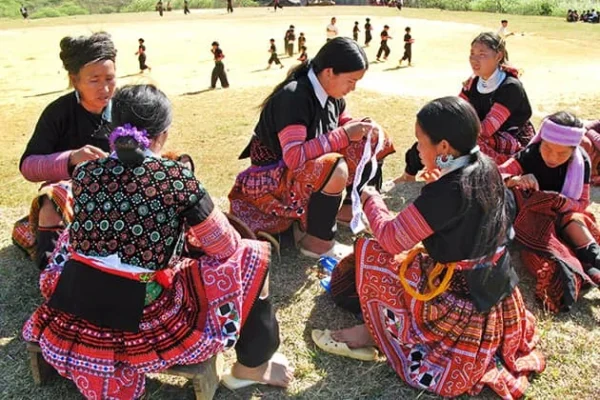
H’Mong People
The H’Mong are one of the largest ethnic groups in the valley. They are known for their vibrant clothing, intricately hand-embroidered with bright colors and geometric patterns. H’Mong women often wear dark indigo skirts with embroidered bands, and their traditional headdresses vary by sub-group.
Their customs revolve around farming, particularly the cultivation of rice on terraced fields, which forms the backbone of their livelihood. Family and community bonds are deeply important, and they often celebrate traditional festivals that showcase music, dance, and traditional food.
- Red Dao People
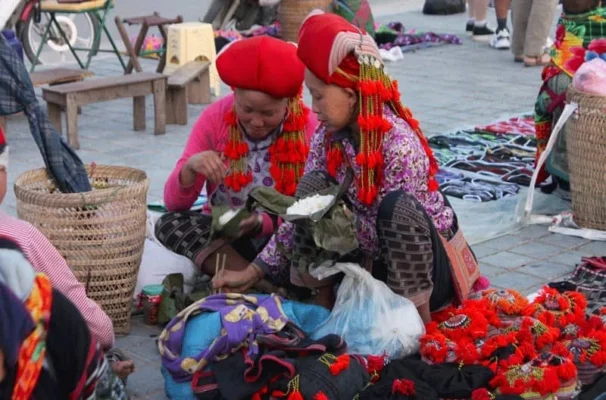
Red Dao People
The Red Dao (also known as Dao Do) are easily recognized by their distinctive red headscarves, which are intricately adorned with silver coins and tassels. The women’s clothing is beautifully embroidered with intricate patterns symbolizing nature, such as flowers and animals, which are believed to bring good fortune.
The Red Dao are skilled in herbal medicine, using natural ingredients sourced from the forest to treat ailments. Their homes are typically built from wood and bamboo, often located near streams. Communal activities like weaving and embroidery play a vital role in Red Dao culture.
- Red Dao People
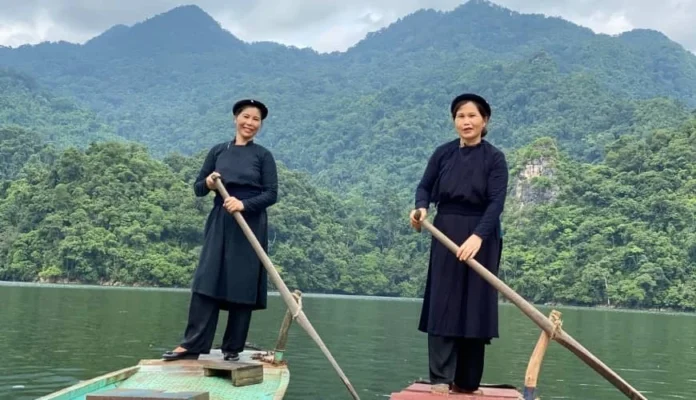
Tay people
The Tay people are another ethnic group that has shaped the cultural landscape of Muong Hoa Valley. They are known for their stilt houses, built on wooden pillars to adapt to the hilly terrain.
Tay people traditionally wear simple clothing made from dark-colored fabric, often decorated with minimal embroidery. Their primary occupations include farming and fishing, and they have a deep connection to the surrounding forests. The Tay also have a rich tradition of folklore, songs, and dances, particularly their beloved then singing, which is often accompanied by the đàn tính, a traditional stringed instrument.
Learn more about: 5 main ethnics minorities in Sapa
2. Local Markets and Cultural Experiences
One of the best ways to immerse yourself in the rich culture of Muong Hoa Valley is by visiting the local markets. These markets serve as vibrant hubs of trade, where ethnic minority groups gather to sell their handicrafts, produce, and other goods. The markets are more than just commercial spaces; they are social and cultural centers where people come together to connect, share stories, and maintain their cultural heritage.
- Ethnic Markets
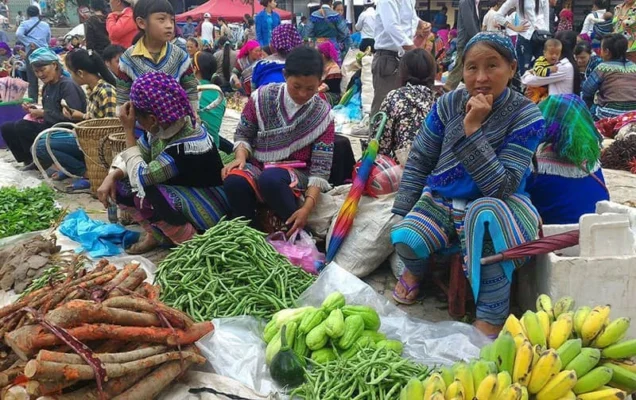
Ethnic market in Muong Hoa Valley
The markets are typically held once a week in various villages throughout the valley. Here, you will find a fascinating array of handmade textiles, such as traditional H’Mong indigo-dyed fabrics and Red Dao embroidered garments.
Visitors can witness the entire process of textile creation, from dyeing and spinning to weaving intricate patterns. In addition to textiles, the markets are famous for their vibrant displays of fresh produce, including organic vegetables, herbs, and medicinal plants gathered from the surrounding hills.
- Cultural Exchange
Visiting these markets offers more than just a shopping experience. It’s an opportunity to learn about the customs and day-to-day lives of the ethnic communities. Engaging with the local vendors, you may hear stories of their ancestors, folklore, and traditional ways of life that have been passed down through generations.
- Traditional Festivals
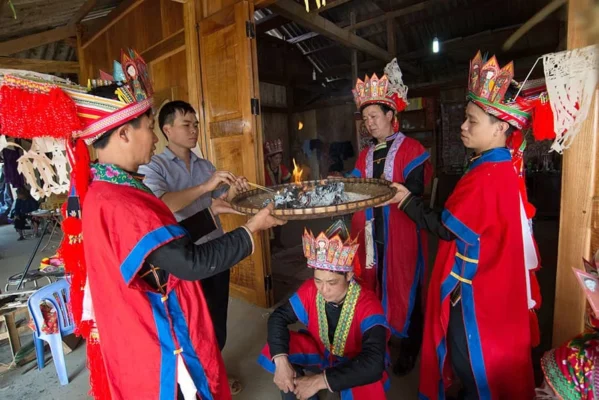
The Cap Sac ceremony
For those fortunate enough to visit during festival times, the valley comes alive with cultural celebrations. These festivals are deeply rooted in the agricultural cycles and spiritual beliefs of the local people.
Celebrations often include traditional music, vibrant costumes, and ritual ceremonies. The Red Dao, for instance, celebrate the Cap Sac ceremony, a rite of passage for young men, which involves sacred dances and the offering of food to ancestors.
IV. The Natural Beauty of Muong Hoa Valley
1. Terraced Rice Fields
Muong Hoa Valley is renowned for its breathtaking terraced rice fields, which stretch across the hillsides like vibrant green and golden steps carved into the earth. These fields, meticulously cultivated by generations of ethnic minority communities, are an iconic feature of northern Vietnam’s mountainous landscape.
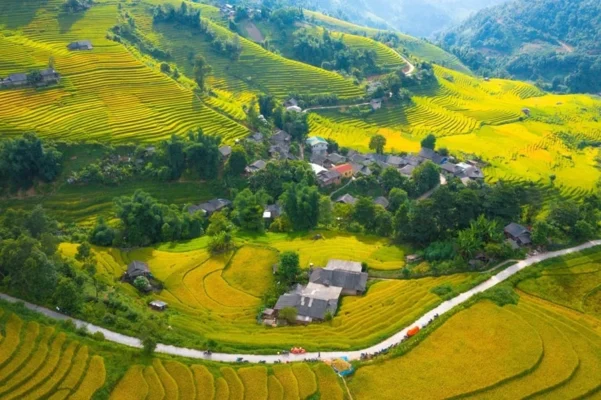
Terraced rice fields in Muong Hoa Valley
During the harvest season, typically from September to October, the fields turn a radiant shade of gold, offering a striking contrast to the deep green of the surrounding forests. This spectacular transformation attracts travelers and photographers eager to capture the valley’s natural beauty in its most vivid form. The harmonious interplay of nature and human effort in creating these terraces represents the resilience and ingenuity of the local people, whose livelihoods depend on rice cultivation.
Do not miss: Top 6 best places to view Sapa rice terraces
2. Muong Hoa Stream
Meandering through the heart of Muong Hoa Valley is the picturesque Muong Hoa Stream, a gentle waterway that flows for over 15 kilometers, connecting the valley’s villages and nourishing the terraced fields. The stream not only adds to the valley’s scenic charm with its crystal-clear waters glistening under the sun, but it also plays a vital role in the daily lives of the locals.

Muong Hoa Stream
For the ethnic minority groups residing here, Muong Hoa Stream is a crucial source of irrigation, sustaining the rice terraces and ensuring a successful harvest each year. Beyond its practical significance, the stream holds cultural and spiritual value, as water is seen as a life-giving force that nurtures both the land and the people. Walking alongside the stream, visitors can hear its soft babbling, which brings a sense of serenity and connection to nature, enhancing the overall experience of exploring Muong Hoa Valley.
Start your journey with: Hanoi to Sapa Private Tour
V. Sapa Ancient Rock Field
1. Unique Historical Monument
The Sapa Ancient Rock Field, located in the Muong Hoa Valley, is a remarkable archaeological site that offers a glimpse into the ancient past of the region. This site is renowned for its mysterious and intricate rock carvings that date back thousands of years. The rocks are adorned with various symbols and patterns, some of which remain enigmatic, and their exact meanings are still subject to interpretation.
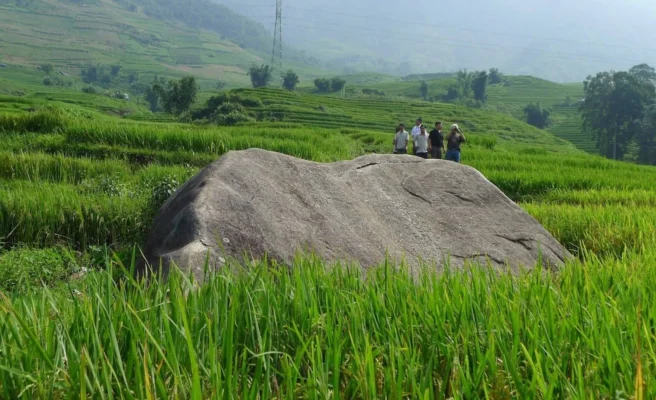
Sapa Ancient Rock Field
The carvings include abstract geometric shapes, spirals, and symbols that are believed to represent ancient religious or ceremonial practices. The origins of these carvings are debated among scholars, with theories suggesting that they may have been created by early human settlers in the region or by indigenous communities with a deep connection to the land.
Do not miss: Sapa Tour from Hanoi 7 Days
2. Cultural Significance
The Sapa Ancient Rock Field holds immense cultural and historical value for the people of the Northwest region of Vietnam. It provides crucial insights into the prehistoric era, offering evidence of the social and cultural practices of early inhabitants. The rock carvings are not just artistic expressions but are considered to be part of the region’s spiritual and cultural heritage.
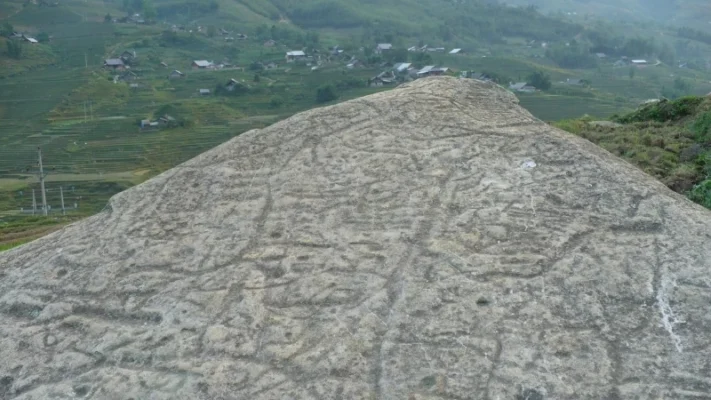
Sapa Ancient Rock Field has special historical significance.
For local ethnic groups, such as the H’Mong, Dao, and Tay people, these carvings are a source of pride and a connection to their ancestors. They are seen as a tangible link to their history and traditions, embodying the rich cultural tapestry of the region. The site is also a place of cultural reverence, where local legends and folklore intertwine with the carvings, adding layers of meaning and significance.
Visitors to the Sapa Ancient Rock Field can experience a profound sense of connection to the ancient past while exploring these fascinating carvings. The site not only enhances the historical understanding of the region but also deepens appreciation for the cultural heritage of the ethnic communities that have thrived in this mountainous area for centuries.
Click here: Northern Vietnam Wonders
VI. What to Eat in Muong Hoa Valley
1. Grilled Stream Fish
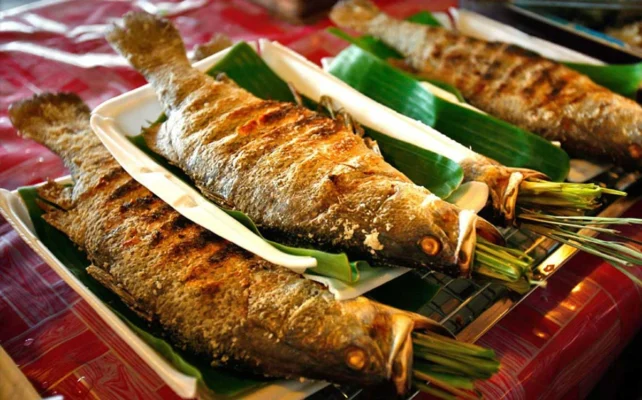
Grilled Stream Fish
Grilled stream fish is a beloved dish. Unlike farmed fish, Sapa stream fish is firm, with soft bones and no fishy smell. The fish is caught in the crevices along Muong Hoa Stream, skewered onto bamboo sticks, and then grilled over red-hot coals or fried crispy in fat. Each piece is sweet, fragrant, and rich.
2. Smoked Buffalo Meat
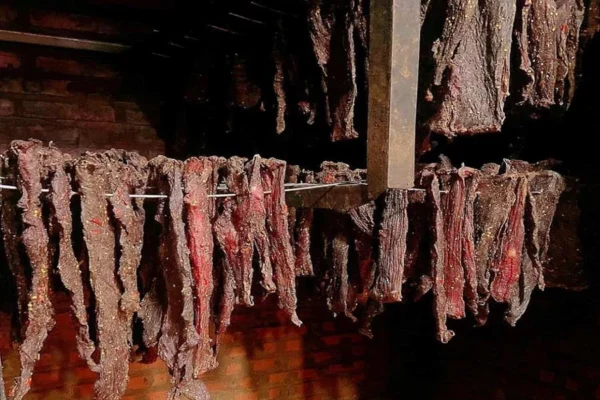
Smoked Buffalo Meat
After cleaning and seasoning, smoked buffalo meat is hung above the stove, allowing the smoke to dry and preserve the meat for a long time. This dish is deeply rooted in the culture of North-West Vietnam. The meat has a dark brown exterior, and when shredded, it retains its natural red color and sweetness, with a smoky aroma blended with spicy and sweet flavors.
3. Cai Meo
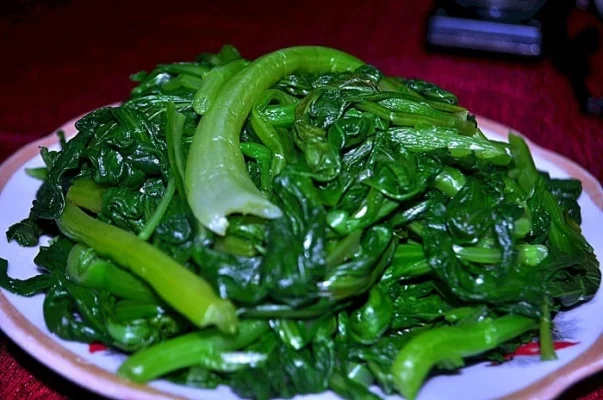
Cải Meo
Cải Meo has curled, dark green leaves that are crisp and chewy. It has a slightly bitter taste at first, but the more you chew, the sweeter it becomes. The simple preparation involves stir-frying it with fat and adding a bit of fresh ginger.
Click here: Sapa Cuisine
VII. Best Time to Visit Muong Hoa Valley
1. Best Time to Visit Muong Hoa Valley
Muong Hoa Valley is a breathtaking destination year-round, but certain seasons offer unique experiences that highlight its natural beauty:
Harvest Season (September to October)
- Golden Rice Terraces: This is arguably the most spectacular time to visit Muong Hoa Valley. The rice terraces are lush and golden, creating a stunning contrast against the backdrop of rolling green hills and clear blue skies. This is the harvest season when local farmers gather their crops, and the valley is awash with vibrant colors.
Spring Bloom (March to April)
- Cherry Blossoms and Plum Blossoms: Spring is another ideal time to explore Muong Hoa Valley. The cherry and plum trees bloom, blanketing the landscape in shades of pink and white. The sight of these delicate blossoms against the rugged terrain is truly enchanting.
Learn more about: Northern Vietnam Itinerary
2. Muong Hoa Valley Ticket Price
Currently, Muong Hoa Valley does not charge entrance fees; visitors can visit the valley freely. However, to enjoy the scenery and take photos at the check-in area, including Hoa stream and Muong Hoa village, you need to buy tickets:
- Adults: 150,000 VND/ticket.
- Children from 6 to 12 years old: 100,000 VND/ticket.
- Children under 6 years old are free.
In addition, about 2 km away is Sapa ancient stone field. To freely explore and learn about the mystery in each ancient rock, you can buy entrance tickets as follows:
- Adults: 100,000 VND/ticket.
- Children from 6 to 12 years old: 90,000 VND/ticket.
- Children under 6 years old are free.
In summary, Muong Hoa Valley offers an exceptional blend of natural beauty and cultural richness, making it an unmissable destination for international travelers. With its stunning terraced rice fields, serene Muong Hoa Stream, and vibrant local culture, the valley provides a unique and immersive experience. From trekking through lush landscapes to engaging with traditional communities and exploring ancient rock carvings, Muong Hoa Valley promises a memorable journey that captures the essence of northern Vietnam. Whether you’re drawn by its scenic beauty or cultural depth, this enchanting valley invites you to explore and discover its many wonders.
See more: Sapa travel tips



